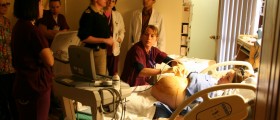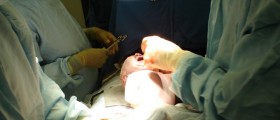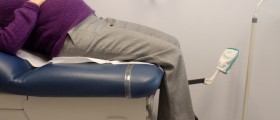
Amniocentesis as a procedure
This medical procedure plays a very important part in prenatal diagnosis, particularly when it is necessary to determine the baby’s health and if there are any chromosomal abnormalities or fetal infections. During this procedure, a very small amount of amniotic fluid is taken from the uterus, and since this fluid contains also fetal cells and tissues, it is possible to perform all the necessary tests. This way it can also be determined whether or not the baby’s lungs are mature enough, but with the help of this method it is also possible to decrease the volume of amniotic fluid, although this is really rarely necessary. The procedure is not necessarily performed under the local anesthesia, but a physician will need ultrasound-guidance to perform amniocentesis. This procedure is done between the 15th and 20th week, and statistics say that about 6% of women take this test. However, maturity amniocentesis is performed later, when it is evaluated that earlier delivery is the best solution for the mother.
After the procedure, the mother is recommended to rest, and the baby’s heart rate is monitored. It is important to know that a small amount of bleeding is not a reason for concern, and neither is cramping. The puncture usually heals in the period of 24 or 48 hours, and the woman may go back to her normal life and everyday activities the very next day. The results may be available after a few days or two weeks top, depending on the reason why the procedure was done, while the results of maturity amniocentesis are available after a fewhours.
What are the risks associated with this procedure?
Even though this medical procedure is very helpful, there are some risks involved and every woman who is considering this possibility should be aware of them. Possible complications vary from those that include the infection of the amniotic sac, improper healing of the puncture that may result in infection or leakage, to the most serious ones - those that result in miscarriage. This procedure also carries certain amount of risk of preterm labor and delivery, fetal trauma, respiratory distress, cramping or vaginal bleeding, but it is important to know also that these complications happen rarely. According to some researches, the risk of miscarriage is even lower than it used to be, and it occurs approximately in one of six hundred women. However, it is a bit higher if the procedure is done before the 15th week.

















Your thoughts on this
Loading...